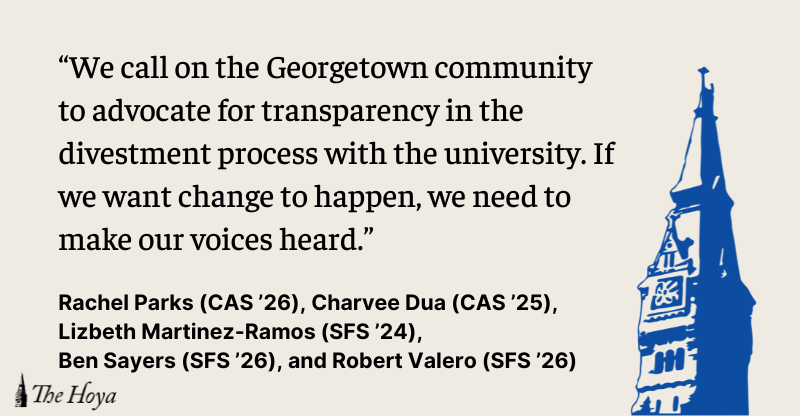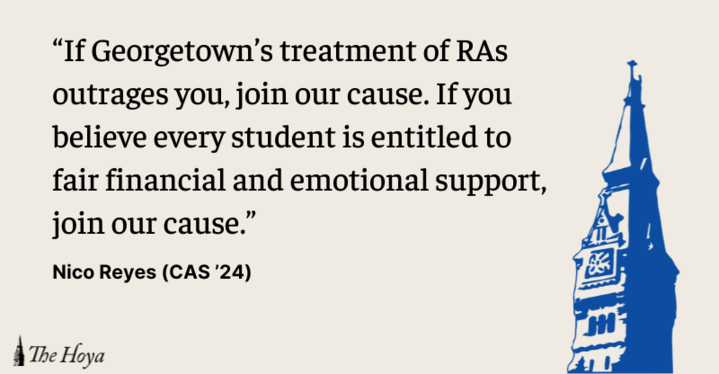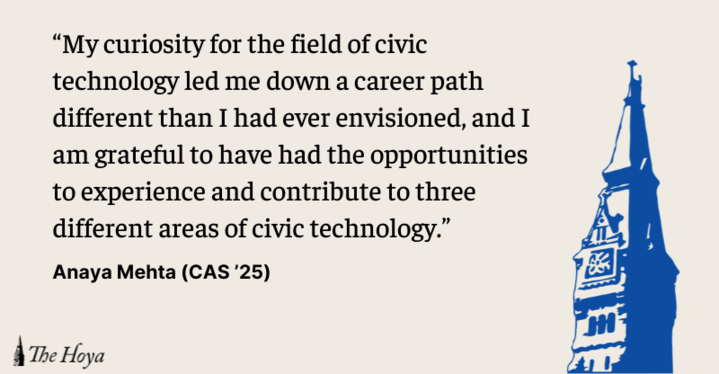In just under two weeks, Georgetown students have a remarkable opportunity to completely remake student life at Georgetown.
After this year’s passage of Student Activities Fee and Endowment reform and last year’s club funding reform, the outgoing President Calen Angert and Vice President Jason Kluger administration has overseen the largest expansion of student-administered student opportunities in decades. These measures placed tremendous new powers in the hands of the student government and permanently eliminated the cash constraints that have plagued student life in the past.
The choice for this year’s candidates is whether they push these advances further and turn Georgetown University Student Association into a fully realized and reactive student advocacy body — one which fights back against the administrative culture and bureaucratic institutions that are stifling the potentials of student extracurricular life.
The candidates face this choice because of the very successful tenure of Angert and Kluger. Over the course of their two-year administration, Angert and Kluger not only maintained vital older programs like the GUSA Summer Fellows, the Readership Program and weekend Georgetown University Transportation Shuttle buses, but they also succeeded in enacting and funding their own agenda, notably the GUSA Fund, which supports student ventures like the new Georgetown University Farmers’ Market. Most importantly, Angert and Kluger promoted SAFE reform and club funding reform, which finally put students back in the driver’s seat of their Georgetown experience. As a result of these two crucial measures, the amount of money available to student groups next year will triple to nearly $1 million and the means by which this money is allocated will be fully in the hands of elected student representatives.
As beneficial as they are, these advances do represent stopgap measures. They very effectively treat the symptoms of frustrated student life, but do not address the root cause: an administrative culture that creates bureaucratic and institutional barriers that burden student life. This culture tethers student groups uncomfortably far away from the money they need to program effectively; suggests clubs have little claim to an office in the Leavey Center and even less to historical spaces at Georgetown; and perhaps worst of all, makes it virtually impossible for entrepreneurial students to access any tiny bit of money and turn it into a reality. Instead, Georgetown students face year-long waits to create a club. Great ideas are stripped bare by committees lest they face the blunt bludgeon of the Access to Benefits policy. Even earnest attempts by the Student Activities Commission to institute something as simple as full-year budgets for clubs have been turned into hair-pulling experiences by a need to contort the policy to fit into a complex institutional box.
It’s important to say that none of these barriers were created with malicious intent. They’ve built up over time, becoming more layered and complex to try to avoid the inevitable bumps in student life which come when students with different interests come and go over the years; it’s perfectly rational behavior for administrators to want to smooth out the unpredictable. But over the years Georgetown students and GUSA have yielded far too much ground in this regard, and it has led to the system we see today. I would suggest that the new GUSA president and vice president play a central role in leading the fight to reconstitute the student activities bureaucracy at Georgetown.
A recent post on University President John J. DeGioia’s Facebook page seems to recognize this necessity. In the post, which linked to a column by Tom Heath in The Washington Post celebrating the student-run Georgetown University Alumni and Student Federal Credit Union, DeGioia suggested that GUASFCU is “an organization that has served our community extremely well for nearly 30 years.” He’s entirely right. GUASFCU is an organization that makes Georgetown great. Campus tour guides refer to it glowingly as part of Georgetown’s bedrock. Yet, what Georgetown students and GUSA presidential candidates must ask themselves is: If GUASFCU were just an idea in the mind of a couple of students today, would it even be able to get off the ground?
Adam Talbot is a junior in the College and was the GUSA Senate Speaker for the 2010 academic year.














